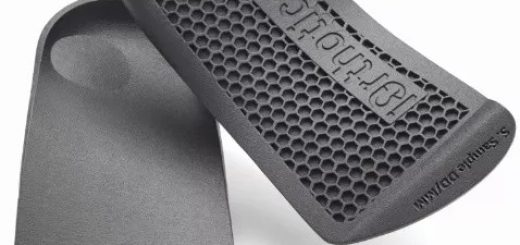Digitalize for Big Possibilities
Plants can collect Big Data, data analytics and artificial intelligence to create the foundations for new business models so that customers and vendors can reach new levels of productivity.
Machines and automation each are capable of generating a lot of data about their functions. The interconnectedness of those machines and automation in the Internet of Things (Industry 4.0) means a plant can collect “big data’’—almost too much to make beneficial use of.
According to the VDMA (the German machine tool industry organization), digitalization and intelligent networking along with numerous developments, from Big Data, data analytics and artificial intelligence, all the way to the platform economy, create the foundations for new business models, so customers and vendors can reach new levels of productivity.
The VDMA also says the immense quantities of data generated by digitalization and networking of machines and processes must be reduced to a usable level. Only if relevant data can be extracted (Smart Data) from the superabundance of big data can an entrepreneurial benefit be derived from Industry 4.0 and inform business decisions based on real-time information.
Through interconnected machines and sensors, it is possible to collect data and make decisions that can improve complex methods and manage supply chains. How often data is collected and the type of data collected enables making timely decisions. A manufacturer can use smart manufacturing to develop predictive measures that can lead to improved manufacturing efficiency and a more profitable product.
One type of data, prescriptive data, points to actions that should be taken, such as assigning parts to different machines. Predictive data indicates what might happen, such as tool wear. Diagnostic analytics checks past performance, such as through production quality measurements, to reveal what happened and why. And descriptive analytics use incoming data on current operations to pull out information, using a real-time dashboard for possible immediate adjustment of the manufacturing process.
The new, digital iXworld i4.0 platform by Index Corp., with its several modules, is a way to accomplish this data actuation. It allows use of smart data to improve productivity and plant operational efficiency, and it brings economic benefits to the user. As a cloud platform, it is, in a sense, the hinge between the various processes at the customer site and the digital Index world. It provides shopfloor-to-top-floor dashboarding and team sharing of real-time data, connecting machines, old and new, with the corporate network.
There are four modules in iXworld. These include iXplore, which provides all the essential information about the organization, products and services. iXshop is an equipment portal that enables the procurement of all products—including spare parts—and services around the machine. The iXservices platform enables a range of interactions for managing all machines at the user factory, including troubleshooting and maintenance tasks, and more. And finally, iX4.0 is the IoT platform that provides the user with status data for further analysis.
The platform is what users employ to gather data about all operations in the plant and compile the smart data they need to optimize plant operations as well as machine and process productivity.
Particularly important is a service portal that manages all customer machines, including those from third parties. It offers troubleshooting and repair management as well as maintenance and service management. Users can identify needed spare parts in the service portal, either by a spare parts list or using an interactive 3D model. With one click, the desired part is placed into a shopping cart and then ordered. iXservices also provides a variety of tools that can be used, for example, to determine and report cycle times. Remote access via data glasses and Teleservice is also possible.
At the machine level—single and multi-spindle machines as well as turn-mill centers—the Index Xpanel operating system permits easy setup and control of the machines and integration into networks for optimal control of the machine. Drawings, setup sheets, user manuals, circuit and hydraulic diagrams, and so on, are available directly on the machine without additional hardware. The user can also run 3D simulations coupled with the machine in real time or even create complex programs using a CAM system. The operating system provides a direct connection between the machine control and the operation’s organization within the company.
iX4.0 is a well thought out example of an IoT platform that integrates production machines into the digital world. It provides the user with status data from the machines on mobile terminals for monitoring machines—older and newer—during unattended operation. With that, shop management can be making better, more profitable decisions.
Source: productionmachining.com




Recent Comments